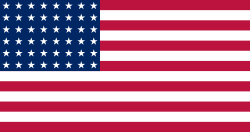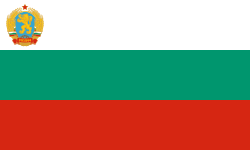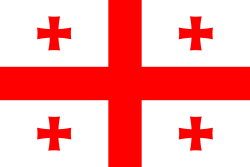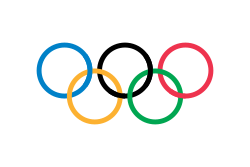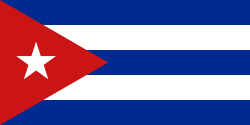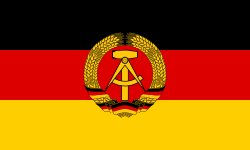Levan Tedyjašvili
| Levan Tediašvili | |
|---|---|
 | |
| Narození | 15. března 1948 Sagaredžo |
| Úmrtí | 17. února 2024 (ve věku 75 let) |
| Alma mater | Státní univerzita v Tbilisi |
| Povolání | politik a zápasník |
| Ocenění | Leninův řád zasloužilý mistr sportu SSSR zasloužilý trenér SSSR Řád čestného odznaku Mistr sportu SSSR |
| Politická strana | Komunistická strana Sovětského svazu |
| Funkce | Poslanec v Parlamentu Gruzie |
| Některá data mohou pocházet z datové položky. | |
| Přehled medailí | ||
|---|---|---|
| zlato | LOH 1972 | volný styl do 82 kg |
| zlato | LOH 1976 | volný styl do 90 kg |
| Mistrovství světa v zápasu ve volném stylu | ||
| zlato | MS 1971 | střední váha |
| zlato | MS 1973 | lehká těžká váha |
| zlato | MS 1974 | lehká těžká váha |
| zlato | MS 1975 | lehká těžká váha |
| stříbro | MS 1978 | těžká váha |
| Mistrovství Evropy v zápasu ve volném stylu | ||
| zlato | ME 1974 | lehká těžká váha |
| zlato | ME 1976 | lehká těžká váha |
| zlato | ME 1978 | těžká váha |
| Mistrovství světa v sambu | ||
| zlato | MS 1973 | do 90 kg |
Levan Kitojevič Tediašvili (rusky Леван Китоевич Тедиашвили, gruzínsky ლევან თედიაშვილი; 15. března 1948 Zemoubani, Gruzínská SSR – 17. února 2024)[1] byl sovětský zápasník, volnostylař a sambista.
V zápase ve volném stylu vybojoval dvě zlaté medaile na olympijských hrách, čtyři zlaté a jednu stříbrnou medaili na mistrovství světa a tři zlaté medaile na mistrovství Evropy. V sambu vybojoval titul mistra světa. Po ukončení sportovní kariéry se věnoval trenérské práci. V roce 2005 byl uveden do mezinárodní síně slávy FILA.
Vyznamenání
 Leninův řád – Sovětský svaz
Leninův řád – Sovětský svaz Řád odznaku cti – Sovětský svaz
Řád odznaku cti – Sovětský svaz Řád Vachtanga Gorgasaliho II. třídy – Gruzie
Řád Vachtanga Gorgasaliho II. třídy – Gruzie- Prezidentský řád znamenitosti – Gruzie, 2018[2]
Odkazy
Reference
- ↑ Умер двукратный олимпийский чемпион по вольной борьбе Тедиашвили. РБК [online]. 2024-02-17 [cit. 2025-02-06]. Dostupné online. (rusky)
- ↑ President Margvelashvili Awards Presidential Order of Excellence to Olympic Champions. president.gov.ge [online]. [cit. 2020-04-18]. Dostupné v archivu pořízeném z originálu.
Externí odkazy
- Levan Tediašvili v databázi Olympedia (anglicky)
Média použitá na této stránce
Olympic Rings without "rims" (gaps between the rings), As used, eg. in the logos of the 2008 and 2016 Olympics. The colour scheme applied here was specified in 2023 guidelines.
Olympic Rings without "rims" (gaps between the rings), As used, eg. in the logos of the 2008 and 2016 Olympics. The colour scheme applied here was specified in 2023 guidelines.
Finská vlajka
US Flag with 48 stars. In use for 47 years from July 4, 1912, to July 3, 1959.
this is the flag of the Soviet Union in 1936. It was later replaced by File:Flag of the Soviet Union (1955-1980).svg.
this is the flag of the Soviet Union in 1936. It was later replaced by File:Flag of the Soviet Union (1955-1980).svg.
Autor: Scroch, Licence: CC BY-SA 4.0
National Flag of the People's Republic of Bulgaria (1948-1968). Tha flag has got the coat-of-arms from 1948
Autor: Scroch, Licence: CC BY-SA 4.0
National Flag of the People's Republic of Bulgaria (1948-1968). Tha flag has got the coat-of-arms from 1948
(c) I, Cmapm, CC BY-SA 3.0
The flag of the Soviet Union (1955-1991) using a darker shade of red.
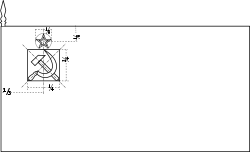
(c) I, Cmapm, CC BY-SA 3.0
The flag of the Soviet Union (1955-1991) using a darker shade of red.

Autor: Scroch, Licence: CC BY-SA 3.0
Flag of Bulgaria (1971-1990). Flag of Bulgaria with Bulgarian coat from 1971.
Autor: Scroch, Licence: CC BY-SA 3.0
Flag of Bulgaria (1971-1990). Flag of Bulgaria with Bulgarian coat from 1971.
Olympijská vlajka
Flag of Iran. The tricolor flag was introduced in 1906, but after the Islamic Revolution of 1979 the Arabic words 'Allahu akbar' ('God is great'), written in the Kufic script of the Qur'an and repeated 22 times, were added to the red and green strips where they border the white central strip and in the middle is the emblem of Iran (which is a stylized Persian alphabet of the Arabic word Allah ("God")).
The official ISIRI standard (translation at FotW) gives two slightly different methods of construction for the flag: a compass-and-straightedge construction used for File:Flag of Iran (official).svg, and a "simplified" construction sheet with rational numbers used for this file.
Vlajka České republiky. Podoba státní vlajky České republiky je definována zákonem České národní rady č. 3/1993 Sb., o státních symbolech České republiky, přijatým 17. prosince 1992 a který nabyl účinnosti 1. ledna 1993, kdy rozdělením České a Slovenské Federativní republiky vznikla samostatná Česká republika. Vlajka je popsána v § 4 takto: „Státní vlajka České republiky se skládá z horního pruhu bílého a dolního pruhu červeného, mezi něž je vsunut žerďový modrý klín do poloviny délky vlajky. Poměr šířky k její délce je 2 : 3.“
Georgian flag in Pantone MS.
Zástupný symbol vlajky. Vizte též Category:Flag placeholders a Coats of arms of None.svg.
Autor:
- Order_of_Honor_(Georgia)_ribbon.svg by Borodun
- derivative work: Mboro (talk)
Ribbon bar: Vakhtang Gorgasal’s Order – 2nd rank (Georgia).
Ribbon bar of the Order of the Badge of Honour. The Soviet Union (USSR).
Flag of South Korea from 21 February 1984 to 15 October 1997, when the exact colors were specified into their shades.
Horst Stottmeister, Levan Tediashvili, Ben Peterson at the 1973 World Championships in Tehran
Ribbon bar of the Order of Lenin. The Soviet Union (USSR).
State Flag of Iran, 1933-1964






